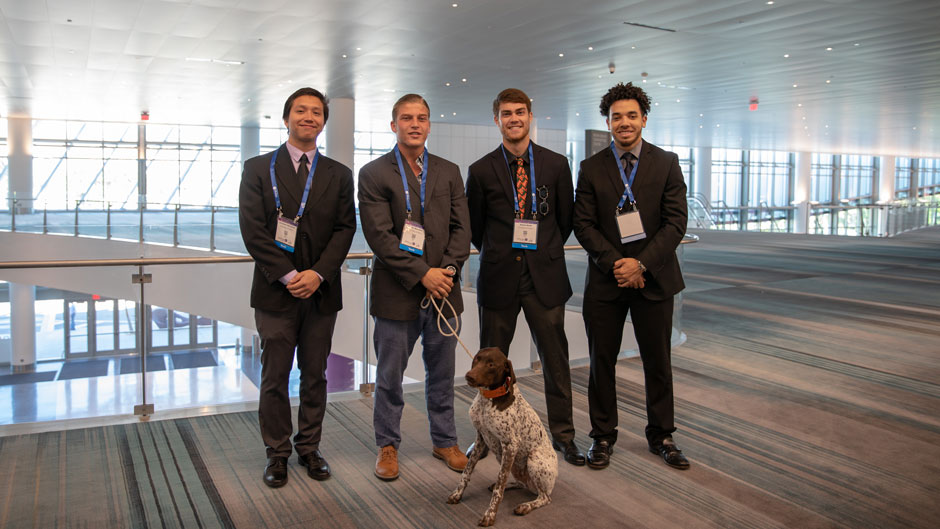Three minutes.
That’s all the time Peter Stansky and his three University of Miami classmates had to pitch their prototype of a new automated pet feeder to a panel of judges.
But all pressures aside, the four mechanical engineering students were ready, even bringing along Stansky’s German shorthaired pointer, Bo, as proof of their device’s effectiveness.
“He’s a much healthier dog because of it,” said Stansky.
They’ve named the feeder Laissez Feast, and it can be programmed to automatically dispense raw or wet pet food for just about any type of animal at regular intervals. A built-in refrigeration unit keeps the food fresh.
It was one of 11 student design projects featured at the first Florida Intercollegiate Competition in Technological Innovation, held Tuesday at the Miami Beach Convention Center as part of the eMerge Americas tech conference.
Engineering teams from six other Florida schools joined UM in the competition, showcasing their innovations to prospective employers and investors. A team from the University of Central Florida won first place—a $1,000 check—for its design project of a cable-based capacitor that can deliver longer-operating life for solar-powered systems.
“It was truly exciting to see the students share their product designs and learn from each other,” said Jean-Pierre Bardet, dean of UM’s College of Engineering, which hosted and sponsored the competition. “Engineers must bring this type of collaboration and innovation to the industry.”
Calling Florida a tech hub that competes against Silicon Valley and Boston’s Technology Corridor, Bardet called the state a “prime location” to build and invest in high-tech industry.
Stansky and his three UM teammates—Jonathan Bown, Christian Marquina, and Aaren Sirak—certainly think so. They plan to patent Laissez Feast and advertise it to the market, hoping to cash in on a piece of the lucrative pet consumables market, which reached $1.4 billion in sales on Amazon two years ago.
He said their device, which won first place at their college’s Senior Design Expo on Monday, addresses two of the biggest concerns among pet owners—the inconvenience of working with raw or wet pet food and the health of their pet. Their feeder, he said, can store food for up to a week and can accommodate multiple pets, dispensing the right food and portion size for the right pet through a RFID sensor that is compatible to a microchip in the pet’s collar.
“We designed the entire thing from the ground up—the cooling, storage, and dispensing units,” said Stansky, noting that Bo helped test the product and is now much healthier because of it.
UM biomedical engineering students Jasia Dickerson, Nasir Mason, and Perry Diaz are hoping their project, a surgical drainage tube clamp, also makes it to market.
Keeping surgical drainage tubes secured requires sutures that restrict flow outcome, leaving patients open to infection. With the tube they developed, surgical fluids would not be inhibited and sutures would not be required.
They 3-D printed their device at the College of Engineering-Johnson & Johnson 3D Printing Center of Excellence Collaborative Laboratory. It is designed for all age groups and costs little to make, said Dickerson, who graduates this May.
She called Tuesday design competition at eMerge “a great opportunity.”
“Seeing other teams helped us learn how we could market our product more effectively.”

